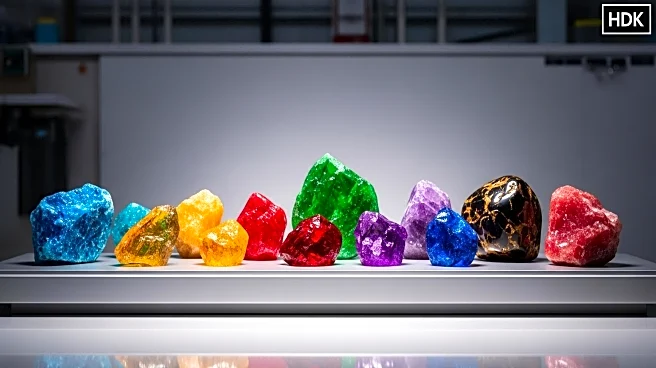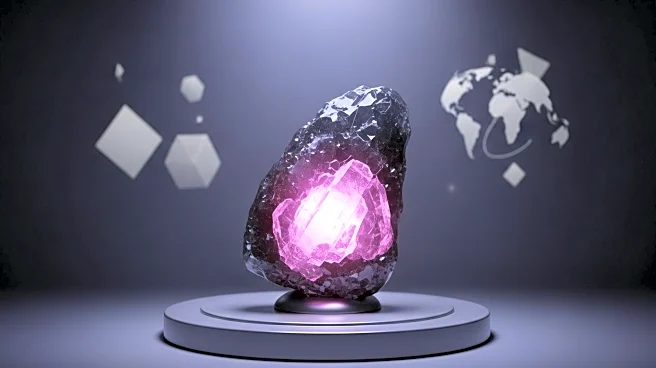What's Happening?
Locksley Resources, in collaboration with Rice University, has established preliminary parameters for the DeepSolv program, a green hydrometallurgical process aimed at enhancing antimony extraction. The
program utilizes a novel deep eutectic solvent (DES) chemistry, offering improved selectivity for antimony dissolution. This innovation represents a breakthrough in reagent technology, while maintaining established hydrometallurgical methods for downstream processing. The collaboration aims to advance commercial applications and strengthen the domestic supply chain of antimony, particularly in light of increased demand following China's export ban. Locksley Resources plans to focus on the Desert Antimony Mine in California and EV Resources' Los Lirios deposits for further testing.
Why It's Important?
The development of the DeepSolv program is significant for the U.S. critical minerals sector, particularly in securing a stable supply of antimony, which is vital for the defense industry. The collaboration between Locksley Resources and Rice University exemplifies the synergy between academic innovation and industry expertise, potentially leading to scalable and reliable extraction processes. As the U.S. seeks to reduce dependency on foreign sources, this initiative could bolster national security and economic stability. The program's success may pave the way for similar collaborations, enhancing the country's ability to meet critical mineral demands.
What's Next?
Locksley Resources will proceed with testing at the Desert Antimony Mine and Los Lirios deposits, delivering flotation concentrates to Rice University. The findings will inform the design of a pilot demonstration plant, aimed at establishing a robust supply chain for antimony. The company will continue to explore opportunities for commercial scalability and regulatory acceptance. As demand for antimony grows, Locksley Resources may expand its operations and partnerships to further strengthen the U.S. market position. The collaboration's progress will be closely monitored by industry stakeholders, potentially influencing future investments in critical mineral extraction technologies.













